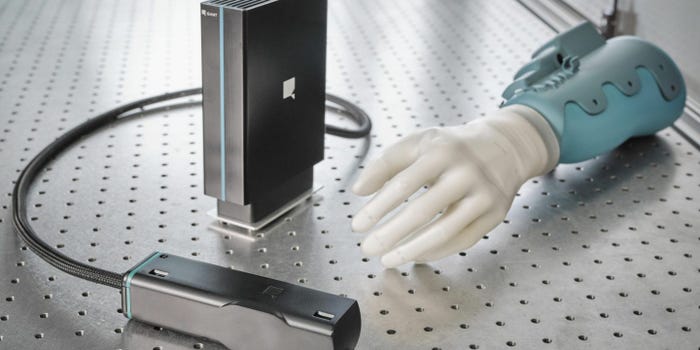Competition in the automotive market has long been intense. But the connected car boom is shifting the power dynamic.
September 10, 2016

Car makers have traditionally had a love-hate relationship with their products. “When they sell a car, they might get thirty grand in revenue. But the moment they sell that car, they hate it,” says Derek Kerton, founder of The Kerton Group and Autotech Council. “A car creates lawsuits, warranty recalls, and DOT-required safety recalls,” Kerton adds. “They’ve had a model that says: ‘let’s sell a car, get as much as profit as we can, and then we’ll hate that damn thing.”
The dawn of the connected car is shaking things up. First, connectivity can reduce the cost of recalls. This is because a significant number of them have a software-related element, enabling car makers to manage some problems via over-the-air updates. Tesla, for instance, is now readying a software update to improve its Autopilot functionality following a handful of fatal crashes involving its Autopilot technology internationally. Other automakers are following in Tesla’s footsteps by developing over-the-air updates as well.
For car makers, the transition to connectivity is swift. Cars are now coming to wireless networks faster than smartphones, according to analysts at Chetan Sharma. By 2020, 98% of cars will be connected based on Accenture projections.
It’s not hard to see why this transition is so brisk. Connected cars enable carmakers to interact directly with their customers—something they have never been able to do before. It also pads their bottom line. In 2015, GM declared that it would earn $350 million in three years by installing 4G LTE mobile broadband in its vehicles. Though cars on the road are still a potential liability for automakers, they are now potential revenue streams as well as drivers can sign up for services such as a Wi-Fi hotspot or streaming media with a recurring payment model.
Thanks to connectivity, car makers can soon make money on second-hand cars as well. “Let’s say that, in 2017, Chrysler ships out a car with its UConnect infotainment system and the customer says: ‘nah, I don’t want any extra add-ons,’” Kerton says. But the person who buys that same vehicle in 2020 opts for a bundle of connected services—including new apps and services that didn’t exist when the car was new. “That is just a phenomenally new market opportunity,” he adds. “The notion of having a carmaker having a relationship with the second or third owner of cars has never happened before.”
Still, when the average cost of a new car is over $30,000 in the United States, a monthly fee of $30 may not move the dial much. “But, for carmakers, building relationships with consumers is the most important thing,” Kerton says. “The question is: ‘what is the next car they are going to buy?’ If you maintain a relationship and the brand loyalty, you have a much better chance of winning the subsequent sale. And you could have all of your apps on one car transfer to your next one.”
Battling the Tech Titans
While the benefits of connecting cars are considerable, so is the competition. Companies like Apple, Google, Microsoft, and Uber are all becoming directly involved in the connected-car marketplace.
Google helped pioneer self-driving car technology and recently hired Shaun Stewart, a former executive at Trip Advisor and Airbnb, to help monetize the technology, according to TechCrunch. Google
Apple is rumored to be developing a self-driving car platform itself but The New York Times just reported that company was rethinking its plans for self-driving cars and has reportedly laid off dozens of employees linked to the initiative.
In 2014, Apple also launched CarPlay, a service that embeds iPhone functionality into cars’ infotainment systems. Instead of using an infotainment system designed by a car maker, users can navigate, make calls, and listen to music using CarPlay. The service works on more than 100 car models from companies ranging from Acura to Volvo. CarPlay can also be installed in older models using aftermarket smartphone receivers.
Related: How to Transform IIoT from a Buzzword to a Competitive Advantage
Carmakers face an uphill battle in fighting established tech companies, which are accustomed to debuting new features and services on a timescale measured in months rather than once per year. Tech companies also have set a high bar for consumer expectations. Last year, J.D. Power discovered that many car owners preferred to use their cell phones for functions such as listening to music or navigation rather than the car’s infotainment systems.
The automotive industry also has the disadvantage of having comparatively little experience with connectivity, says Terry Hughes, managing director and SVP at AppCarousel who serves on the board of the Connected Vehicle Trade Association. Hughes says that he once asked one of his automotive clients what they did with the data they collected. “They said: ‘Well, we don’t collect any and our vehicles don’t really have any connectivity. Once the car comes out of the factory, we never hear from the thing, ever.’”
Things have changed now, of course, but as car makers look to interact with their customers, they will face stiff competition from some of the most powerful tech companies. “Automotive companies have every right to be worried that Google and Apple will go over the top of them, and,” Hughes says. “But the way they design the vehicles, there are some things that Google and Apple just quite can’t do such as controlling over-the-air updates of electronic control units.”
While companies like Google and Uber are seeking to disrupt the car market, luxury car makers are hoping to leverage connectivity as a market differentiator. “Companies like Jaguar, Audi, and Mercedes are aspirational brands,” Hughes says. “What they want and hope to do is to engage with the buyer of the car. Many of the people who own these vehicles are business people and executives. “Car makers can say to their customers: ‘we have a whole suite of business apps that you can sign up for.’” For instance, car makers like Jaguar Land Rover could offer a business app suite that includes Microsoft products, Dropbox, and Norton security in the future.
The Challenge and Potential of Driverless Cars
Companies like Google that have long understood the power of connectivity were early to see the promise of driverless cars. “Driverless cars require massive connectivity, and when you have that, you have the ability to create new kinds of software and apps,” Hughes says.
Connectivity also enables consumers to have continuity in service. “Think about your Gmail ID. If your computer crashed tomorrow, you could go to another machine, sign in with your Google ID and pick up all of the services without interruption,” Hughes says. The same principle should apply to driverless cars. “In the future, whenever I get into a car, whatever kind of car it is, I should get the apps that I have purchased,” Hughes says. “[With a driverless car,] I am probably sitting in the back of the car at this point so I can access all of the movies and the apps that I have signed up for wherever I am.”
Rather than burdening customer with username and passwords, consumers in driverless cars will use biometrics, Hughes predicts. “You could talk to a rental car, it could recognize your voice, and just open up and know who you are whether it is eye recognition or voice,” he says. “That is the expectation in the driverless car of the future. When I get into any vehicle in the future, whether it is a driverless Uber or Ford, I expect to be able to sign in and get my favorite radio station and all of my favorite services, movies, and apps. It will know in terms of navigation where my home is.”
Related: 2017 Salary Guide: IoT’s Captains, Data Stars, Security Pros, Developers — and What They Make
Navigating this complicated landscape will likely prove challenging for individual companies. In the broader IoT landscape, collaboration has become standard. Similarly, the automotive industry will likely expand its partnerships with tech companies, telecom firms, and other players.
Car companies are also retooling their business models—and will be forced to make bigger changes if self-driving ride-hailing vehicles become mainstream in coming years. While Uber and Volvo plan on testing self-driving taxis and 18-wheelers in the near future, Ford, General Motors, and Fiat Chrysler all plan to launch self-driving vehicles within five years.
About the Author(s)
You May Also Like
.png?width=700&auto=webp&quality=80&disable=upscale)
.png?width=700&auto=webp&quality=80&disable=upscale)

.png?width=300&auto=webp&quality=80&disable=upscale)
.png?width=300&auto=webp&quality=80&disable=upscale)

